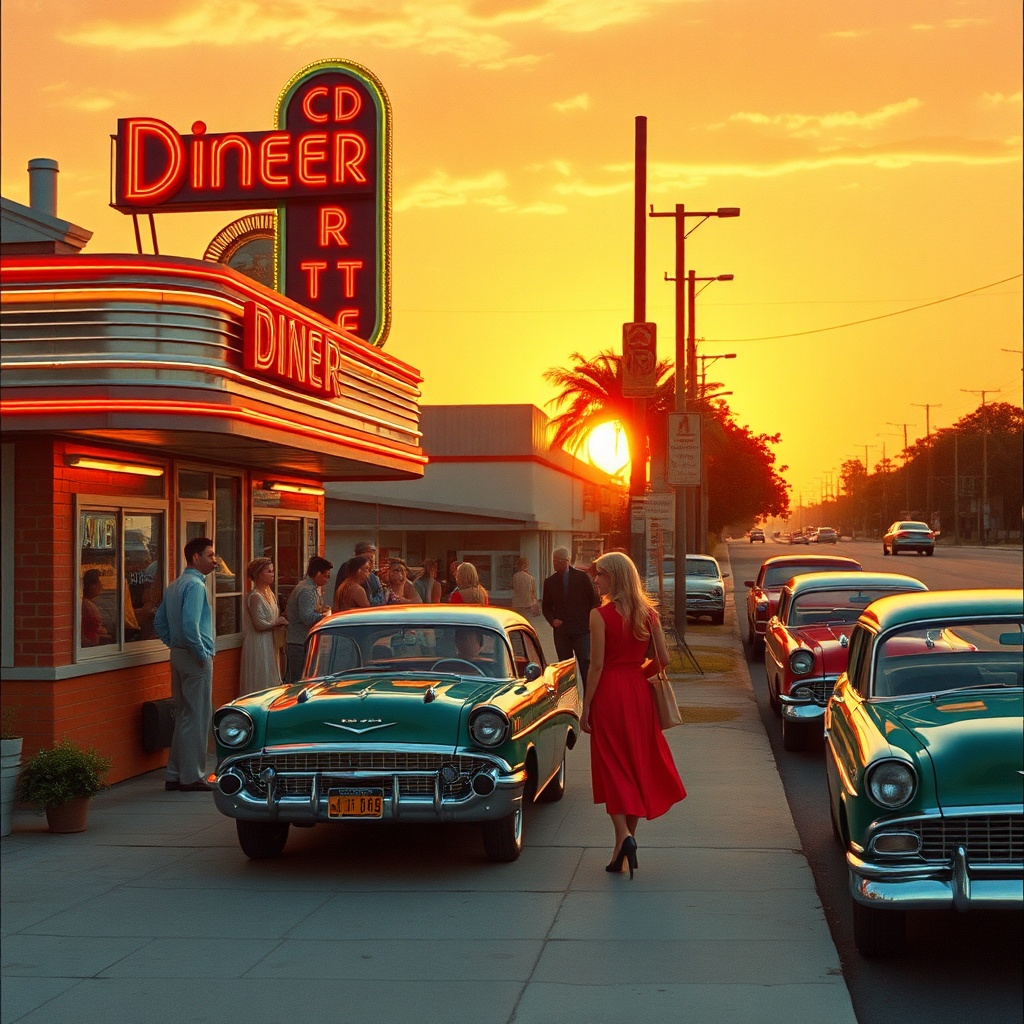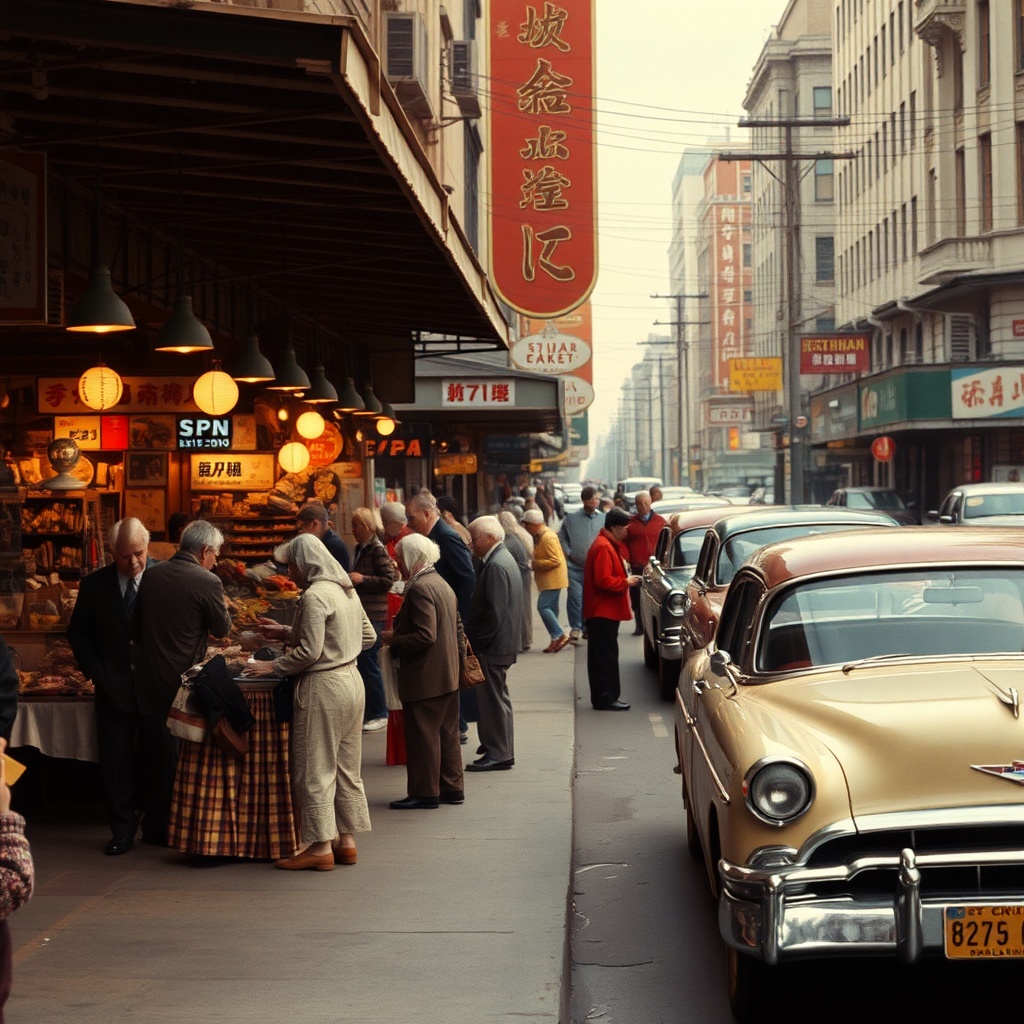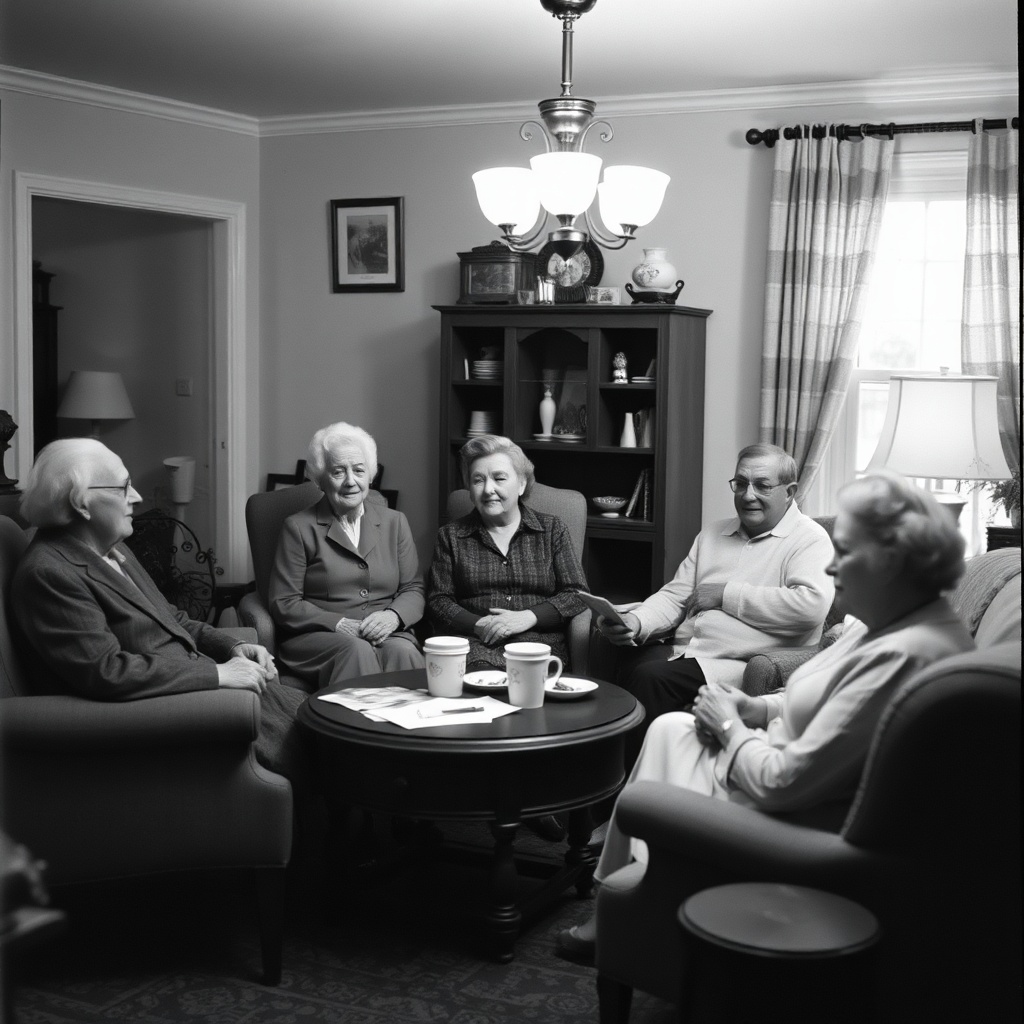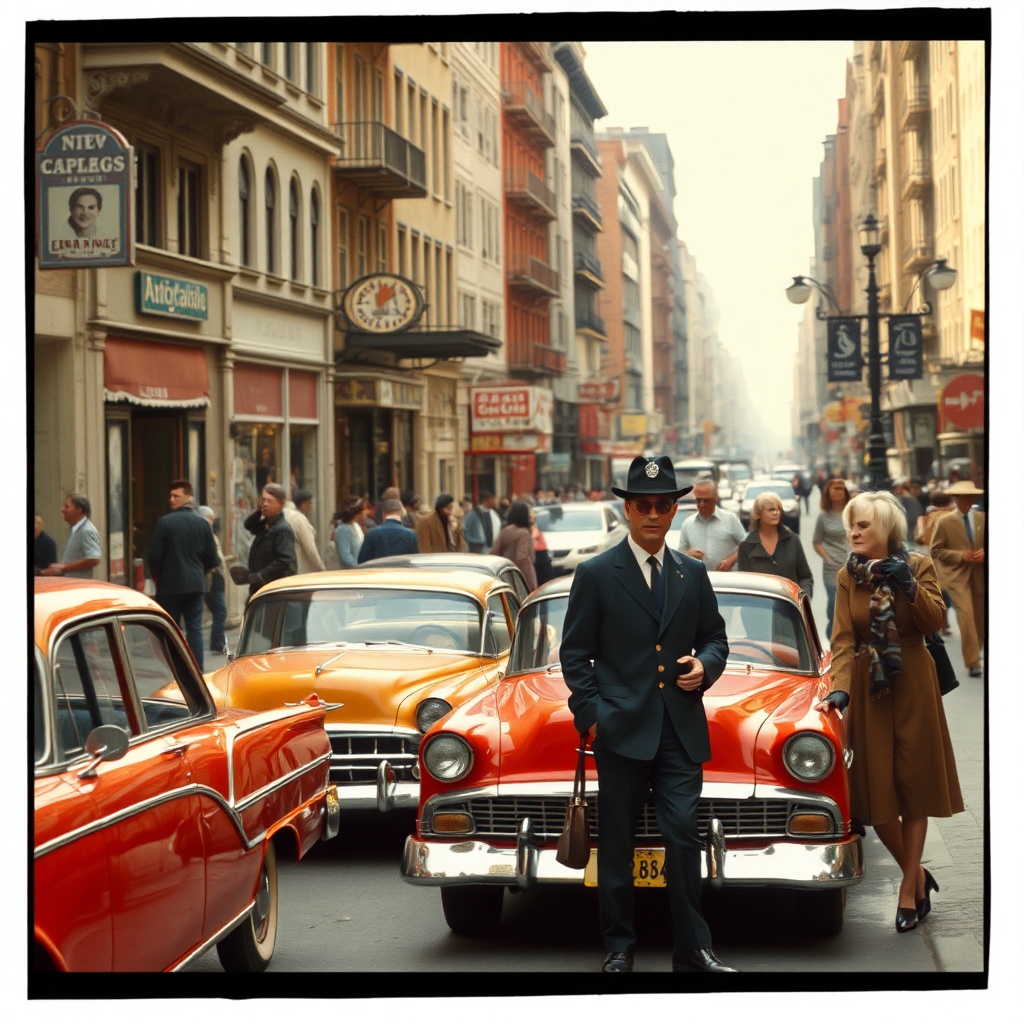A Journey Through Time: Rediscovering Iconic Moments of the 1960s

Step into the vibrant world of the 1960s, a decade that was not only a turning point in history but also a remarkable era for photography. This journey will take you through iconic moments captured by visionary photographers, allowing you to relive those times and reflect on their significance.
The Cultural Revolution
The 1960s were marked by profound social changes. Let’s explore some pivotal events and the photographers who immortalized them:
- The Civil Rights Movement: A fight for equality that resonated across the nation.
- Counterculture and Hippie Movement: A quest for peace and love, challenging societal norms.
- The Space Race: A thrilling competition that showcased human ingenuity.
Iconic Photographers of the Decade
Meet the individuals who shaped the visual narrative of the 1960s:
| Photographer | Notable Work | Impact |
|---|---|---|
| Gordon Parks | Photographs of the Civil Rights Movement | Highlighted struggles and triumphs of African Americans. |
| Robert Frank | The Americans | Provided a raw look at American life, capturing its contradictions. |
| Diane Arbus | Portraits of marginalized communities | Challenged perceptions of beauty and normalcy. |
Rediscovering Iconic Moments
Let’s take a closer look at some iconic photographs from the 1960s that left an indelible mark on our collective memory:
- “Lunch atop a Skyscraper”: Capturing the resilience and courage of workers during the Great Depression, this photo became a symbol of hope.
- “The Burning Monk”: A haunting image of Thích Quảng Đức, which brought global attention to the struggles in Vietnam.
- “The Kiss”: Alfred Eisenstaedt’s famous photograph of a sailor kissing a nurse in Times Square on V-J Day, encapsulating the joy of peace.
Reflecting on the Legacy
The photographs of the 1960s continue to resonate today. They serve as reminders of the struggles, triumphs, and transformations that shaped our present. As you reflect on these moments, consider how they have influenced today’s society and culture.
Interactive Engagement
To further your exploration, we invite you to:
- Share Your Memories: What are your recollections of the 1960s? How did these events impact your life?
- Visit a Local Exhibit: Find a photography exhibit that showcases 1960s work; immerse yourself in the visual storytelling.
- Join a Discussion Group: Connect with others who share your interest in photography and history.
As we journey through time, the lens of 1960s photographers invites us to reflect on our shared history. Each photograph is not just an image; it is a portal to understanding the past and envisioning the future. Let’s continue to celebrate these iconic moments and the stories they tell.
The Art of Storytelling: How 1960s Photographers Captured the Spirit of an Era

Introduction to a Transformative Decade
The 1960s was a decade marked by profound change, and through the lens of photographers, we can see a vivid tapestry of stories waiting to be unraveled. What do you remember about this era? Perhaps it was the music, the fashion, or the social movements that defined a generation. Each photograph taken during this time encapsulated more than just a moment; it captured the essence of a cultural shift.
The Power of Visual Storytelling
Imagine standing in a crowded street during a protest, the air thick with passion and conviction. Photographers like Gordon Parks and Diane Arbus didn’t just click their cameras; they told stories. How do you think a photograph can evoke emotions? Every snap of the shutter was a declaration of existence, a moment frozen in time that spoke volumes about the societal struggles and triumphs of the era.
Iconic Images that Shaped Perception
Consider the iconic images of the Civil Rights Movement or the vibrant scenes from the Woodstock Festival. Each photograph was a piece of history. Do you have a favorite photograph from the 1960s? Perhaps it was a powerful image of Martin Luther King Jr. or the colorful expressions of youth culture. These images were not merely documentation; they were invitations to engage with the world around us.
The Role of Photographers as Chroniclers
Photographers of the 1960s were not just observers; they were chroniclers of the human experience. What do you think motivated them to capture these moments? They sought to mirror the joys, struggles, and aspirations of the people, creating a narrative that resonated deeply with those who viewed their work. The lens became a bridge connecting individuals to the larger narrative of the time.
Engaging with the Past
Looking back at the photographs of the 1960s, we are invited to reflect on our own experiences. How did the events of that decade shape your life? Each image can spark memories, conversations, and a deeper understanding of the societal changes that influenced the world we live in today. Engaging with these photographs allows us to honor the stories of those who came before us.
Conclusion: The Legacy of 1960s Photography
The art of storytelling through photography in the 1960s remains a powerful testament to the era’s spirit. What lessons can we draw from this time? As we continue to share stories and experiences, let us remember the importance of capturing moments that define our own narratives. The photographers of the 1960s showed us that every image has a story to tell, and every story deserves to be heard.
Emotional Echoes: The Power of Black and White Imagery in the 1960s

Introduction to Black and White Photography
Imagine a world where colors fade away, leaving behind only the essence of moments frozen in time. Black and white photography, particularly in the 1960s, evoked powerful emotions through its simplicity and stark contrast. This era was marked by social upheaval, cultural revolutions, and profound human experiences, all captured in a monochrome palette.
The Emotional Impact of Monochrome
Why do you think black and white images resonate so deeply with us? Perhaps, it’s their ability to strip away distractions, allowing the viewer to focus solely on the subjects and their emotions. When you look at a black and white photograph from the 1960s, what feelings arise? Here are some reflections:
- Raw Emotion: The absence of color highlights feelings—joy, sorrow, love, and despair.
- Timelessness: Black and white images often feel eternal, bridging generations and evoking nostalgia.
- Storytelling: Each shadow and light plays a role in telling a story, making you ponder the narrative behind the image.
Iconic 1960s Photographers
Let’s explore some influential photographers who masterfully captured the essence of their time in black and white:
- Henri Cartier-Bresson: Known for his concept of the “decisive moment,” he captured fleeting emotions with impeccable timing.
- Diane Arbus: Her unique perspective on marginalized individuals brought forth a deep sense of humanity and vulnerability.
- Garry Winogrand: Winogrand’s street photography revealed the chaotic beauty of everyday life, filled with energy and emotion.
The Cultural Context
The 1960s was a tumultuous period filled with social movements, including the civil rights movement, anti-war protests, and the counterculture revolution. Black and white photography served as a powerful tool for:
- Documenting Change: Capturing pivotal moments in history that defined a generation.
- Expressing Dissent: Visual stories of protests conveyed deep emotions and resistance.
- Highlighting Humanity: Photographers focused on the human condition, showcasing both the struggles and triumphs of people.
Engaging with the Images
As you reflect on black and white photographs from this era, consider the following:
- What emotions do these images evoke in you?
- Can you recall personal experiences that resonate with the stories told through these photographs?
- How does the absence of color influence your perception of the subject?
Black and white photography in the 1960s offered a powerful lens through which to view the world—a world full of contrasts, emotions, and stories waiting to be told. As we engage with these images, we not only appreciate the artistry but also connect with the shared human experience that transcends time.
Behind the Lens: Personal Stories of 1960s Photographers and Their Inspirations
Exploring the Heart of Photography
In the vibrant tapestry of the 1960s, photography emerged as a powerful medium for storytelling. It was during this decade that many photographers not only captured images but also conveyed deep emotions and societal shifts. Let’s delve into the personal stories of some iconic photographers and discover what inspired them behind the lens.
The Power of a Moment
Richard Avedon, known for his striking portraits, often spoke about the importance of capturing a moment that tells a story. He believed that every face has a narrative, a history waiting to be unveiled. Can you recall a photograph that left a lasting impression on you? Perhaps it evoked a memory or feeling that transported you back in time.
Challenging Norms
Diane Arbus challenged social norms through her lens. She sought out subjects often marginalized by society, revealing their beauty and humanity. Her work prompts us to think: what stories do we overlook in our daily lives? What experiences have shaped our understanding of beauty?
Documenting Change
Gordon Parks used photography as a tool for social change. His images depicted the struggles and triumphs of African Americans during the civil rights movement. As you reflect on his work, what do you think is the role of photography in advocating for justice and equality?
Personal Connections
Many photographers from the 1960s found inspiration in their personal lives. For instance, Mary Ellen Mark‘s intimate portrayals of her subjects often revealed her empathy and understanding. Have you ever felt a connection to a photograph that resonated with your own experiences?
The Legacy of the Lens
The stories of 1960s photographers remind us that behind every image is a deeper narrative. As you explore these personal accounts, consider how photography has influenced your life. What memories do you cherish that were captured in a photograph?
Interactive Reflection
As we conclude this journey, take a moment to reflect: What inspires you about the world of photography? How has your perception of images changed over the years? Share your thoughts with friends or family, and perhaps even revisit some cherished photographs from your own past.
The Evolution of Perspective: How Photography Changed in the 1960s
The 1960s was a decade of transformation, not only in politics and culture but also in the art of photography. This era witnessed a profound shift in how photographers approached their craft, leading to new techniques and perspectives that changed photography forever.
Breaking Traditional Boundaries
In the 1960s, photographers began to challenge conventional norms. They moved away from staged portraits and idealized landscapes, embracing a more candid and raw approach. This shift is crucial for understanding how photography evolved during this time.
- Documentary Photography: Photographers like Gordon Parks and Robert Frank focused on real-life scenarios, capturing the essence of everyday life.
- Street Photography: Icons like Garry Winogrand and Diane Arbus explored urban environments, revealing the complexities of society.
New Techniques and Technologies
The 1960s also saw significant advancements in photographic technology. Cameras became more accessible, and film technology improved, allowing photographers to experiment with new styles.
- 35mm Cameras: The introduction of lightweight 35mm cameras made it easier for photographers to capture spontaneous moments.
- Color Photography: While black and white photography dominated earlier decades, color became more prevalent, adding vibrancy to images.
Changing Perspectives
Photography in the 1960s was not just about capturing images; it was about conveying messages. Photographers started to use their work to comment on societal issues.
- Social Activism: Many photographers used their art to highlight civil rights movements and anti-war protests, influencing public opinion.
- Artistic Expression: Artists like Andy Warhol blurred the lines between photography and fine art, experimenting with pop culture themes.
Influence on Future Generations
The innovations and perspectives of the 1960s laid the groundwork for future photographers. The decade inspired countless artists to explore new themes and techniques.
Understanding the evolution of photography during the 1960s allows us to appreciate the medium’s rich history. It invites us to consider how the lens of the past continues to influence the way we see the world today.
